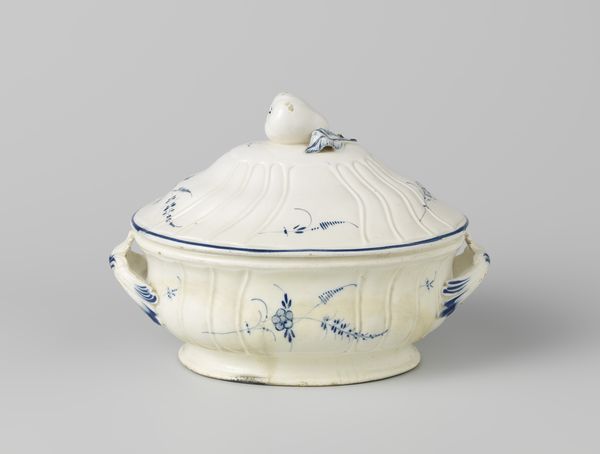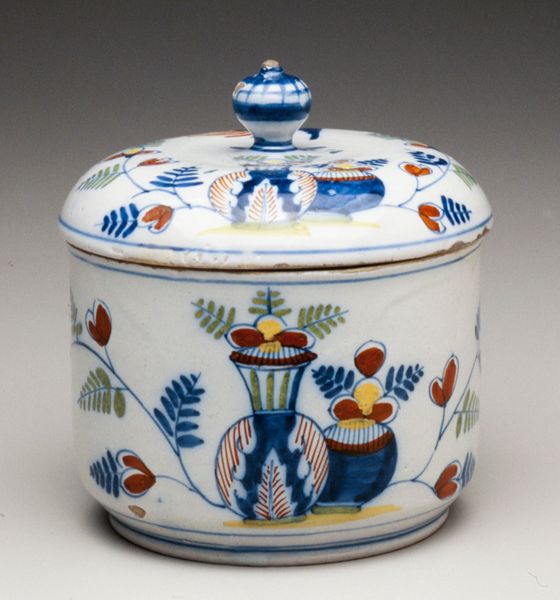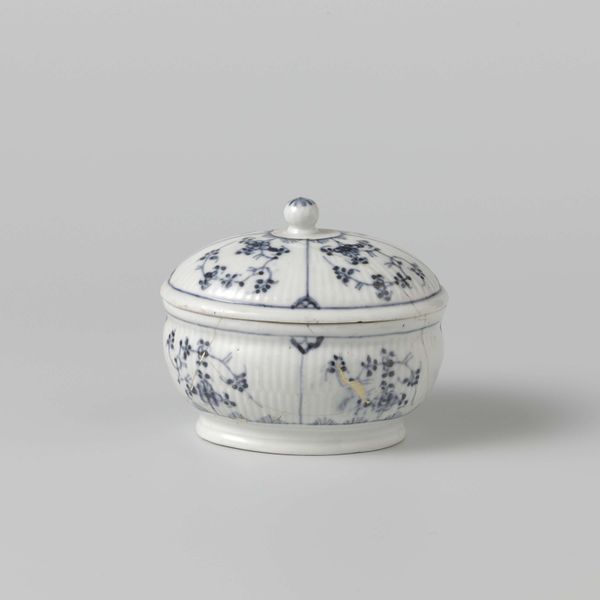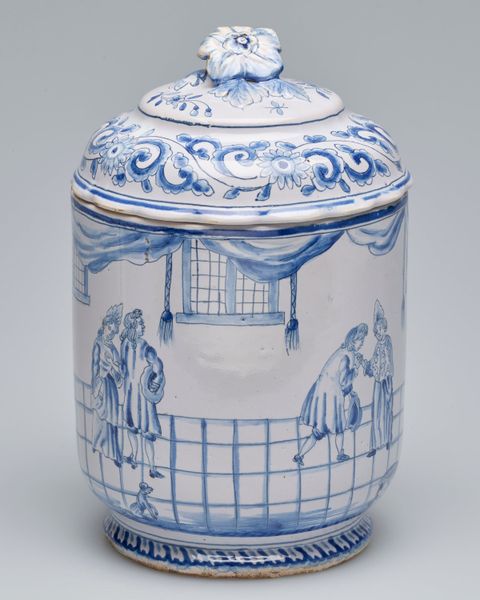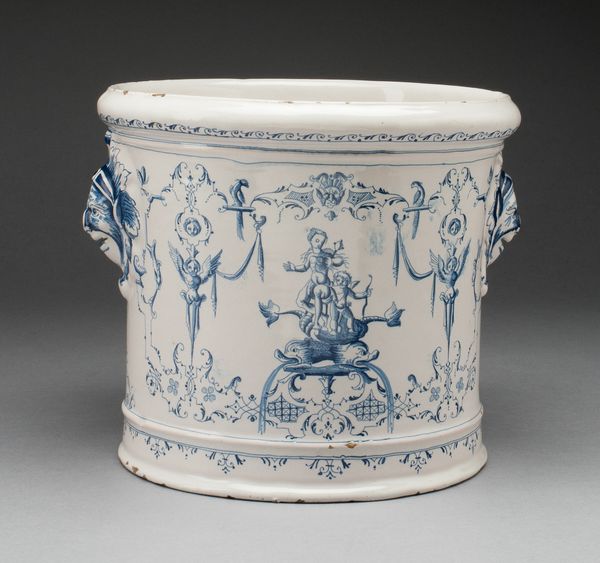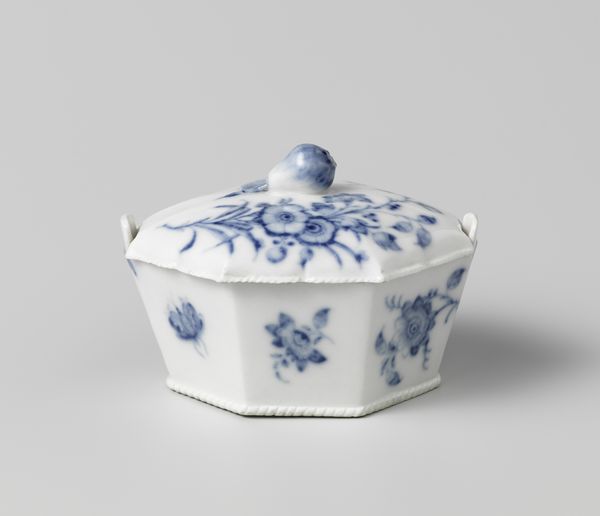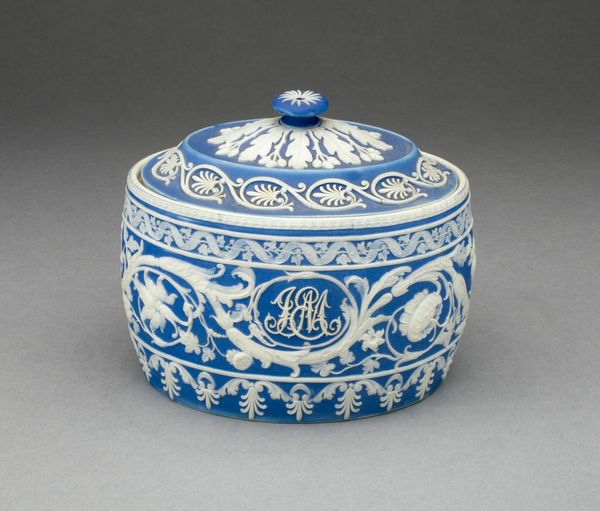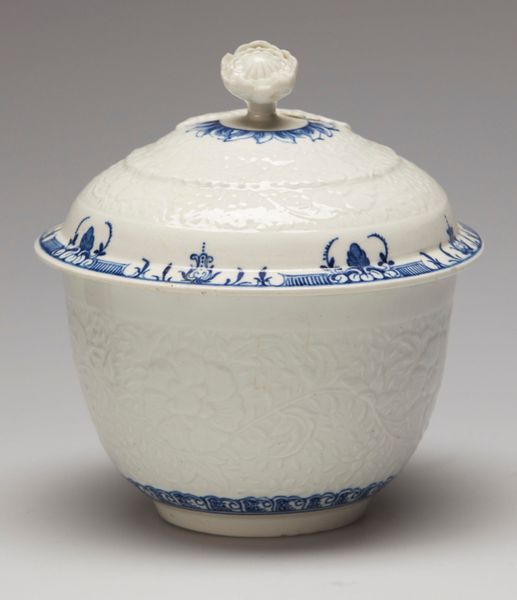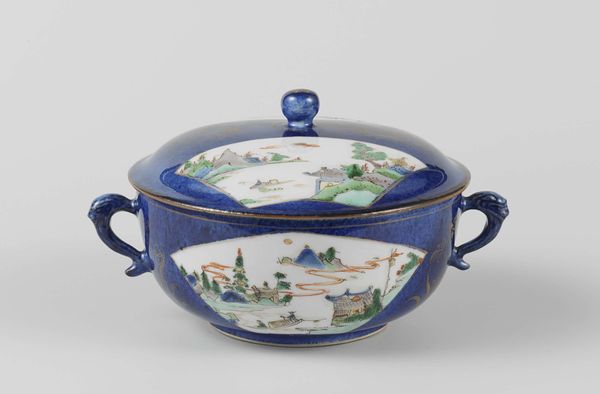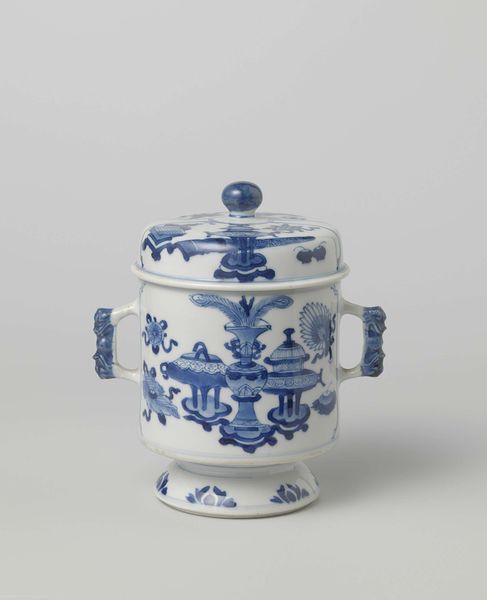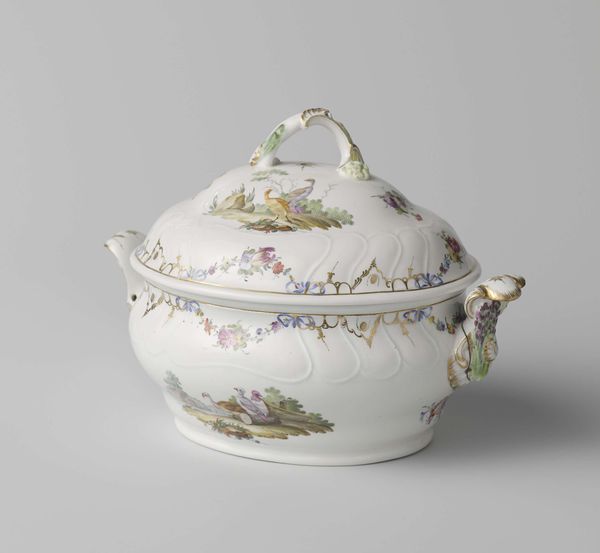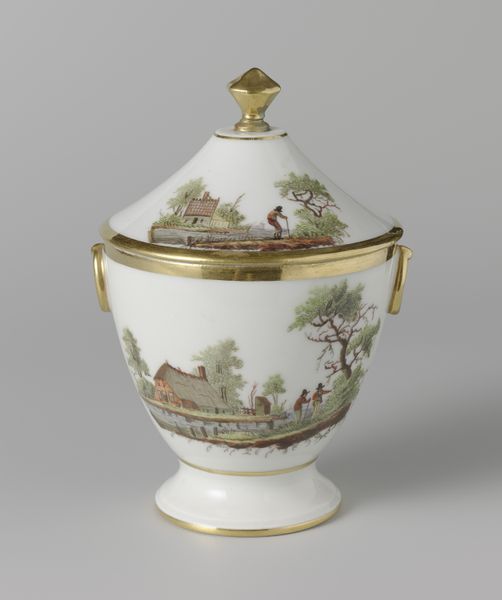
Dimensions: Height: 4 1/8 in. (10.5 cm)
Copyright: Public Domain
Editor: This charming “Sugar Bowl”, created by William Adams in the 18th century, resides at the Metropolitan Museum of Art. Crafted from ceramic and earthenware, the cool blue backdrop, adorned with neoclassical white figures, is what really stands out to me. What are your thoughts on this work? Curator: The "Sugar Bowl" presents a compelling case study in Neoclassical design through the lens of formalism. It's form adheres to that period's aesthetic through use of symmetry and balance: Note how the cylindrical form and the round lid create visual harmony. Also the interplay between the ground (blue) and the decorative elements in white evokes the clean and ordered visual structure typical of Neoclassicism. How do you feel about the use of horizontal lines along the base? Editor: I didn’t notice them before, but now that you point them out, they create a subtle base. What does this indicate? Curator: Exactly. And also, notice the material's impact: the smooth, cool ceramic supports this, giving a sense of pristine classicality through geometric lines. What does the decoration evoke in this artwork? Editor: Now I see it's all connected: geometric figures with precise design! But is this all there is, the geometric elements? Curator: This is where formal analysis reveals its power; there may be other interpretations but here are elements such as the precise geometrical details are the core and convey the art. This experience allows us to explore more deeply how shape, texture, color and line play on our experience. Editor: It certainly opened up a new approach to appreciating this piece! Curator: Absolutely. By viewing the sugar bowl this way we gain insight and a language that helps decode it's art beyond just history and style.
Comments
No comments
Be the first to comment and join the conversation on the ultimate creative platform.
